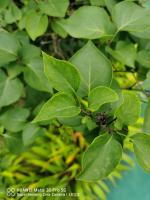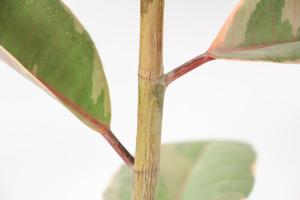What is Rubisco in Water Deprived Plants?
Ribulose-1,5-bisphosphate carboxylase/oxygenase, commonly known as Rubisco, is a protein found in the chloroplasts of plants responsible for initiating the process of carbon fixation. In water deprived plants, Rubisco plays a critical role in the adaptation to drought conditions by regulating water usage.
How Rubisco Functions in Carbon Fixation
Carbon fixation is the process of converting atmospheric carbon dioxide (CO2) into organic compounds that can be used by plants. Rubisco catalyzes the rate-limiting step in this process by combining CO2 with a five-carbon sugar, resulting in two molecules of a three-carbon compound called 3-phosphoglycerate (3PGA).
Rubisco is considered to be one of the most abundant proteins on earth, with an estimated 50% of all plant protein being Rubisco. Its importance in carbon fixation cannot be overstated, as it provides the basis for all life on earth by supplying the energy and carbon necessary for the growth and development of all plants and animals.
The Role of Rubisco in Water Deprived Plants
Plants that experience water deprivation face a variety of challenges, including decreased photosynthesis rates, increased oxidative stress, and reduced growth and yield. In order to adapt to these conditions, plants undergo a number of adjustments in gene expression, cellular metabolism, and physiological processes, one of which is the regulation of Rubisco activity.
It has been observed that water deprived plants exhibit a decrease in Rubisco activity, resulting in a reduction of carbon fixation and photosynthesis rates. This reduction in activity is believed to be a protective mechanism to prevent excessive water loss through transpiration, as the opening of stomata, the pores on the leaf surface responsible for gas exchange, is linked to water loss.
Optimizing Rubisco Activity in Water Deprived Plants
Although the reduction in Rubisco activity in water deprived plants can be beneficial for water conservation, it is important to maintain adequate levels of carbon fixation in order to sustain plant growth and development. Researchers have therefore been exploring ways to optimize Rubisco activity in water limited environments.
One approach is through the use of transgenic plants, where genes associated with drought tolerance are introduced into the plant's genome, resulting in increased water use efficiency and higher Rubisco activity. Another potential solution is the development of chemical treatments that can stimulate Rubisco activity in water deprived plants.
Conclusion
Rubisco is an essential protein in the process of carbon fixation and is critical to the growth and survival of all plant life on earth. In water deprived plants, Rubisco activity is reduced as a protective mechanism to prevent excessive water loss, but maintaining adequate levels of carbon fixation is necessary for plant growth and development. The optimization of Rubisco activity in water limited environments is an active area of research that offers promising solutions for the adaptation of plants to drought conditions.

 how many times do yo...
how many times do yo... how many planted tre...
how many planted tre... how many pine trees ...
how many pine trees ... how many pecan trees...
how many pecan trees... how many plants comp...
how many plants comp... how many plants can ...
how many plants can ... how many plants and ...
how many plants and ... how many pepper plan...
how many pepper plan...






























